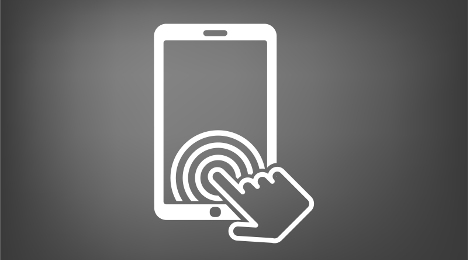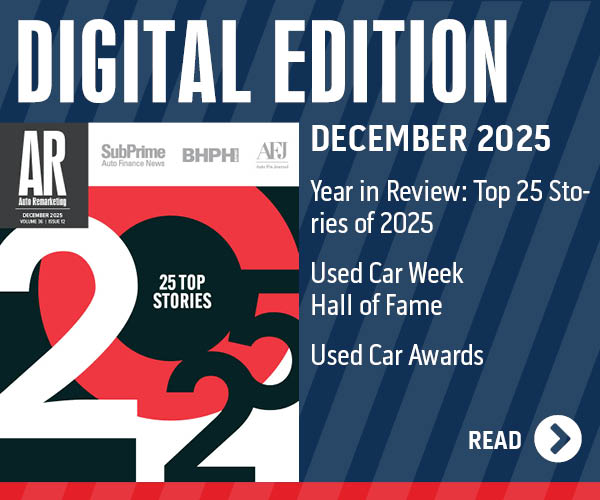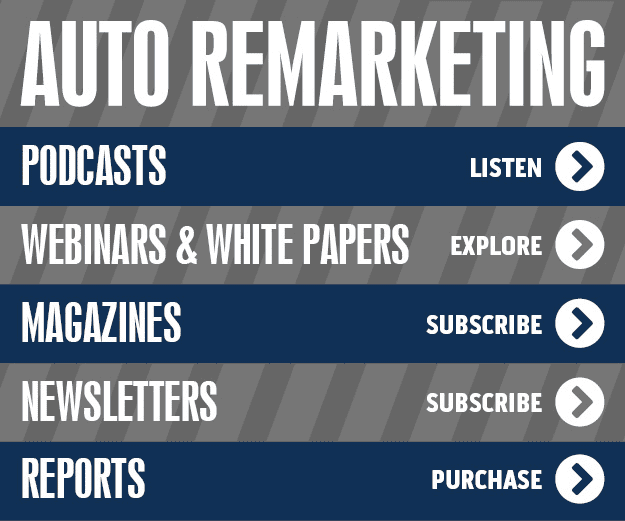Buy-here, pay-here dealers probably often want to get into the wallets of their customers. Not necessarily in a creepy and illegal way, but rather to ensure the individual makes payments and remains current on their installment contract.
Well, with a new platform set to make a major launch into the BHPH space this month, operators now can find a way into their customers’ wallets — at least electronically, through a smartphone.
Walletron, which delivers a SaaS platform that automates brands’ presence in mobile wallets like Apple Wallet and Android Pay, is rolling out its moBills system to BHPH dealers. It’s one of the many technology launches set to be a part of annual conference hosted by the National Alliance of Buy-Here, Pay-Here Dealers that begins this coming Tuesday at the Wynn/Encore in Las Vegas.
Walletron chief executive officer Garrett Baird explained to BHPH Report during a recent phone conversation that the company is leveraging more than four years of refined service to national retailers and other brands to make moBills a tool that can help operators who have 50 accounts or 5,000 accounts in their portfolio. Baird pointed out that what differentiates Walletron’s offerings from other billing apps is how it’s connected to the default wallet app installed on smartphones.
“That is a key piece to our strategy. These mobile wallets have these always on, always available aspect to them,” Baird said. “There’s no trip to the App Store for the consumer. There’s no searching, downloading and installing. Instead, it’s a simple two-tap enrollment process to get going for the consumer. Once they’ve made that connection into the mobile wallet, we at Walletron essentially act as the plumbing between that consumer and the clients and brands we work with to keep that item in the mobile wallet up to date with the freshest information possible.
“When you have a presence in the mobile wallet, you enable the ability to communicate with the consumer via notifications as if you had an app but it’s leveraging these apps that already exist on these devices. I can light up that consumer’s smartphone with a completely branded message by virtue of just being there in the wallet,” he continued.
“We, on behalf of our clients, control that capability and allow them to send messages to consumers that are event-based or campaign-based. All of this pulled together creates this fantastic communication channel for our clients to communicate with customers,” Baird went on to say.
And for BHPH dealers, that means having another way to reach their customers when their payment is due — or if it’s over overdue.
Furthermore, Baird emphasized it takes just two taps by the customer to have your store’s related finance company embedded into a customer’s mobile wallet. He reiterated four of the main advantages that can help operators increase payment frequency while reducing costs if the dealership still prints and delivers paper statements.
• Easy pre-prepared and scheduled, or customized and immediate, push notifications regarding pre-payment so your customer never forgets when the bill is due. Although these look like texts and “wake up” the phone above the lock screen, as they are tied into the mobile wallet feature of the phone, Walletron indicated these messages are not considered texts for regulation purposes overseen by federal agencies.
• Easy bill presentment, mobile invoices, billing and account history, all linked to the customer’s mobile wallet in their smartphone.
• Easy customer payment through the mobile device, by credit/debit card, bank account, or through connections to a cash payment network.
• Post due date or payment push notifications, again timed and pre-prepared, or customized and immediate; with the ability to send additional messages, coupons or updates on sales or service specials.
“The moBills bill payment technology takes the BHPH industry to a whole new level of efficiency in bill payment, using the device that 97 percent of smartphone users already have in their hand,” Baird said.
Walletron will be presenting special offers to attendees in Las Vegas next week for NABD 2017. Dealers can still register for the event by going to www.bhphinfo.com or by calling (832) 767-4759.
Baird mentioned another Walletron client had nearly 20 percent of its customers completely connected via moBills and the mobile wallet within the smartphone within six months of the launch. He’s bullish about the BHPH industry adopting this technology even faster.
“We think we can blow away those results in this particular space just given these customers and their centrality to the smartphones in their lives in helping them remember to pay much easier,” he said.
GPS-based technology provider PassTime recently completed a software integration project with QuotePro Kiosk, a payment solution for independent and buy-here, pay-here dealers
The companies highlighted that customers utilizing both QuotePro Kiosks and PassTime GPS solutions will now be able to perform a variety of device management functions directly from the QuotePro Kiosk. The partnership will focus on cross marketing and promotion to benefit both firms’ current and potential customers.
QuotePro Kiosks serve as an exclusive in-store payment channel for many BHPH dealers. Now because of this integration, payments made on a QuotePro Kiosk can be communicated in real-time to the PassTime device regardless of the dealer management system (DMS) used by the operation.
QuotePro Kiosk vice president of sales Chris Albu said, “This integration provides dealers who embrace and use technology another efficiency in their business. It eliminates manual entry while communicating time-sensitive data in real-time. It not only saves dealers money, but improves their business processes.”
For more information about QuotePro Kiosk call (800) 630-8045 or send a message to [email protected]. PassTime can be reached at (800) 828-1564 or [email protected].
Service and technology providers are coming to this year’s annual gathering hosted by the National Alliance of Buy-Here, Pay-Here Dealers armed with products that Ken Shilson insisted are brand new and can help operators of all sizes immediately.
Shilson highlighted more than a dozen different companies are ready to launch a new solution during the 19th annual National Conference. The NABD president explained why these technology companies are coming to the Wynn/Encore in Las Vegas on May 23 to 25 with new tools ready for deployment.
“The profitability in the auto business in general is being squeezed, not just in buy-here, pay-here but in all segments,” Shilson said. “They’re having to pay more to get a better vehicle because of the competition. The cost of funds is going up. The cost of compliance is going up. Those cost increases can’t be passed on to the consumer. The consumer can’t absorb them.
“Their overhead is going up and the only way to control it is to become more efficient and implement more technology,” he continued. “Technology is the only way that they can control their operating costs going forward without having to add more operating expense.”
Shilson acknowledged that BHPH dealers are primed and ready to take back market share this year. But he added that will take additional sales volume to make that happen.
“You don’t want to increase your overhead to do it,” Shilson said. “Technology is absolutely critical going forward if they want to be successful and make money.”
During the conference’s general session, NABD is orchestrating what it’s dubbed a Technology Showcase, featuring three different participants.
First, Manheim will be presenting one of its mobile auction units to show its capability.
“They can bring the auction to you and make it more accessible and convenient to the end customer. I think it will really be something where people will have a wow factor,” Shilson said.
Next, Magnum Contact will explain the capabilities of its online chat feature; a tool NABD already leveraged for its website.
“We were getting a lot of hits but we didn’t know what people were looking for. We put in the chat feature, and I would say it’s been singularly the best thing we’ve done,” Shilson said. “The chat function has singularly accounted for more leads and business than any other marketing idea we’ve ever had. And it will do the same thing for the buy-here, pay-here industry if they get it implemented on their websites.”
Furthermore, Podium will be describing its online reputation management offerings and showing how operators can enhance their standing and reduce the impact of negative reviews as potential buyers travel the Internet.
“You want to turn negative feedback around as quickly as you possibly can. If you just have negative feedback out there, people tend to gravitate to it and then they shut you off,” Shilson said. “Podium changes the dynamics. They are able to increase the feedback, which makes the number of negative comments much smaller and less relevant.
Besides the three firms included in the Technology Showcase, Shilson mentioned 10 other companies set to deploy new technology during NABD 2017, including:
—700Credit
—Auto Master Systems
—AutoZone
—Autozoom
—DealerSocket
—Deal Pack
—FactorTrust
—PassTime
—Spireon
—Walletron
Also, Shilson mentioned special individual social media training is set to be offered by Auto Search Technologies. He indicated attendees can sit down with company experts and ask questions specific about their dealership and its social media endeavors.
Shilson emphasized that there has never been more technology discussion and offerings on tap for the National Conference than there is this year.
“It’s not the same old technology. It’s not the same stuff you’ve seen before and it’s repackaged,” Shilson said. “There’s some really cutting edge things that we’re going to show for the first time ever in the history of buy-here, pay-here.
“It’s important that dealers understand this is not just the same old song and dance. They’re really going to see some new things that will help them,” he went on to say.
And as an added bonus, operators who haven’t already finalized their plans for NABD 2017 can do so through what Shilson said is the “Suite Deal Program.” By calling NABD, attendees can secure accommodations at the Encore for a $200 discount off of the regular price without resort fees while stilling getting conference registration at the same price as previous early bird discounts.
“This is your way to attend and stay in luxury at the same time,” Shilson said.
NABD can be reached by calling (832) 767-4759.
As part of its continued commitment to the needs of buy-here, pay-here dealers, short-term lenders and the alternative financial services industry, FactorTrust recently announced a tool called FlexFormat; what the company contends is the first industry standard in reporting short-term loan data for products focused on underbanked consumers.
FactorTrust classifies the underbanked typically as consumers with traditional credit scores under 700.
While Metro 2 is the industry standard for traditional credit bureaus, it provides an electronic data reporting format more suitable for prime loans, lacking a sufficient data reporting structure for information like loans with terms less than one month. FlexFormat fills this void. It can provide a single format designed around the needs of short-term lenders, while also enabling Metro 2 standardized reporting. FlexFormat’s process allows customers to submit data to FactorTrust at no cost, which then maps and translates the data into Metro 2 format, allowing the data to be passed on to traditional credit bureaus.
FactorTrust vice president of auto finance Scott Brackin elaborated about how this tool can help BHPH dealerships.
The FlexFormat will enable buy-here, pay-here operators the ability to report more accurately. BHPH customers and the reporting needs of associated loans are very similar to the loan information that FactorTrust has been collecting in the short term loan space,” Brackin said in a message to BHPH Report.
“FactorTrust has heard from many operators, along with dealer management system providers, that stuffing a BHPH loan into Metro 2 is very cumbersome as each of the big 3 have different requirements and standards,” he continued.
“Additionally, BHPH operators can feel safe in reporting their data to FactorTrust without the fear of another alternative credit union ‘poaching’ their customers,” Brackin went on to say. “We feel that the BHPH marketplace is lacking a database that maintains the reporting history for consumers that deal in the BHPH space.
“By opening this up to the BHPH marketplace, we are creating an opportunity for operators to make the needed judgement calls on an applicant by checking out how those consumers are paying other operators,” he added.
FlexFormat also includes additional loan types that Metro 2 doesn’t support, providing better monitoring, quality assurance and data accuracy. This leads to higher and more complete data quality for these additional loan types, and addresses loan-stacking concerns.
FlexFormat fills a market need that has been missing until now, including convenient, single-format reporting where lenders only report credit history information once.
The company went on to mention FlexFormat has a simple XML reporting process, driven by events within the lender’s loan management system, such as:
—Number and value of new and open loans
—Last payment amounts and dates of made and missed payments
—Mapping and translation of data into Metro 2 format
—Real-time reporting that eliminates lag time between reporting cycles, enhancing accuracy
—Secure SSL encryption, ensuring highest industry standards in data security
—Flexible options in reporting only new loan inquiries, or all loan data
With FlexFormat’s high quality data reporting capability, lenders and providers more accurately assess risk and make faster decisions on consumers’ likelihood to repay loans. FlexFormat provides a complete overview of consumers’ creditworthiness, so consumers can get the credit they deserve and can afford. Since its inception, FactorTrust has processed more than 250 million records in real-time.
FactorTrust chief executive officer Greg Rable said the company is uniquely qualified to bring FlexFormat to the market due to its experience working with both Metro 2 and short-term lending data. This proprietary format is founded on FactorTrust’s expertise in working with data reporting of short-term and non-prime loans.
“Because Metro 2 cannot support reporting of alternative loans for underbanked consumers, we developed FlexFormat to provide an industry standard and process that has gone unmet by the Big 3 bureaus,” Rable said. “This benefits not only the lenders who have asked for a one-to-many reporting format, but also the consumers who have been, until now, widely unrepresented by the Big 3 bureaus.
“FlexFormat easily configures and maps customers’ data in a way that is digestible by the Big 3 bureaus,” Rable added.
When compiling the 19th version of the buy-here, pay-here industry benchmarks, Ken Shilson noticed a metric climb to a level never seen previously — the allowance for bad debts.
On one hand, the president of Subprime Analytics and the National Alliance of Buy-Here, Pay-Here Dealers acknowledged the figure could be viewed negatively because of how much operators are financing to their customers nowadays. But Shilson also emphasized how the growth in the allowance for bad debts actually can help BHPH dealers in an important way — preparing them for significant changes coming in association with accounting mandates for this item.
As has been mentioned in BHPH Report previously, the upcoming changes in accounting regarding the allowance for losses could influence capital providers and operators.
This past summer, the Financial Accounting Standards Board (FASB) issued an accounting standards update the organization explained was designed to improve financial reporting by requiring timelier recording of credit losses on loans held by financial institutions and other organizations. And those organizations can include related finance companies that hundreds of BHPH dealers use as the conduit to originate and maintain their portfolio of contracts on the streets.
Because it’s such a monumental shift, the FASB indicated that the new rule doesn’t go into practice until the end of 2020, giving operators several years to prepare for the change.
But at least to a degree, Shilson is seeing dealers prepare for the change since the allowance for bad debt reached an all-time high, according to the industry benchmarks he will present during the 19th annual BHPH Conference at the Wynn/Encore in Las Vegas on May 23 through 25. Shilson mentioned the benchmarks are even more robust this year because the data supporting the metrics is derived not only from Subprime Analytics’ pool of operators, but also the 20 groups hosted by NCM Associates as well as the National Independent Automobile Dealers Association.
It’s that fact that prompted Shilson to emphasize how he believes the latest benchmark in allowance for bad debts and upcoming accounting changes are so closely tied.
“Everybody needs to understand the new standard and everyone needs to understand how it’s going to affect them in their borrowing relationship. That needs to happen now because you don’t want to blindside your lender. You don’t want to wake up and have to apply the standard and then figure out your equity just disappeared,” Shilson said.
To help operators understand these changes, Shilson is bringing to this year’s conference a pair of executives who in his opinion are “two of the smartest guys on this subject that I know.” Set to appear during panel discussions and what NABD is dubbing its “Solutions Hall” are John Donaldson of Ace Motor Acceptance and Ronnie Lee of RSM.
“Those two guys really understand it,” Shilson said about the knowledge Donaldson and Lee have to convey to conference attendees about the relationship between operators and capital providers is likely to change because of these accounting changes.
This year’s conference also includes 12 interactive workshops that will be covering:
—An accounting/tax update
—Capital
—Compliance hot topics
—A current developments update
—Getting your best customers back
—Reconditioning best practices
—Keeping customers paying and increasing recoveries
—Sourcing and financing the right inventory
—Technology solutions for GPS
All of the educational sessions will be at Encore this year which was recently renovated and won the Travelers Magazine award as the finest hotel in Las Vegas. All the Encore rooms are suites and NABD secured $209 discounted room rates with no resort fees while supplies last.
Shilson emphasized the prices for accommodations “make this fabulous facility affordable to everyone.”
Attendees may register online at www.bhphinfo.com or by calling (832) 767-4759.
Spireon announced updates to Recovery Link — a feature of its one-step GoldStar GPS solutions vehicle recovery system for buy-here, pay-here dealers — which can allow them to automatically send recovery agents locator intelligence on the location of lapsed vehicles through text or email.
GoldStar can let BHPH dealers see the number of times a recovery agent views a shared link generated by the recently enhanced tool produced to increase efficiency by saving dealers time and money, according to Spireon.
“One of the biggest hurdles BHPH dealers face in recovering assets is the number of manual steps required to communicate with recovery agents, increasing the time and money spent on recovery,” Sunil Marolia, vice president of product management at Spireon said in a news release.
“Our latest Recovery Link feature streamlines the process and automates communication with agents. As we all know, time is money, which is why GoldStar is designed to help our customers be as efficient and productive as they possibly can," Marolia continued.
The company said GoldStar’s real-time location and vehicle status intelligence offerings can help minimize financial risk for dealers by lessening the probability of vehicles being damaged, facing impoundment or accruing other avoidable costs.
The revamped solution shares both vehicle location history and real-time location information with recovery agents, which can be clearly viewed on a smartphone or tablet computer, making it easier to locate vehicles while on the road, the open connected vehicle company said.
Recovery agents only have access to vehicle location and data that is deliberately shared.
“I used to stay up late locating and relaying info to recovery agents over the phone,” Margie Kimble of Joe’s Auto Sales said. “Now I can simply send them the recovery link and it’s a done deal.”
Additionally, dealers can restrict access to the location of a vehicle after recovery by suspending the link either manually or automatically. Otherwise, it expires after 30 days.
Through features like Spireon’s Recovery Link, 78 percent of customers using GoldStar have been able to finance customers with lower credit scores, and 84 percent have reported reduced delinquencies, according to the company.
For more information about Recovery Link and other GoldStar assets, visit www.spireon.com/goldstar-notifier.
Good news for buy-here, pay-here dealerships in New Jersey — and perhaps in other states, too. Garden State dealers can continue to utilize GPS and starter-interrupt devices.
The National Independent Automobile Dealers Association capped a prolonged lobbying effort with a last-minute charge that prevented anti-consumer provisions in a proposed bill from becoming law in New Jersey.
As originally introduced, Assembly Bill 756 would have prevented the use of GPS and starter-interrupt devices as a condition to financing.
NIADA, through its Buy Here-Pay Here Commission, worked closely with its state affiliate — the New Jersey Independent Automobile Dealers Association (NJIADA) — and the Telematics Service Providers Association (TSPA) to express the industry’s opposition to many provisions in the bill.
“Originally, the bill was an all-out ban on the device and its usage, which would have a huge detriment to the dealers and creditors in New Jersey,” said TSPA’s Corinne Kirkendall, who also is vice president of compliance and public relations at PassTime.
“In our discussions, we slowly changed the dialogue,” Kirkendall continued during a phone conversation with BHPH Report about those meetings with lawmakers that first started back in 2015.
NIADA submitted written comments opposing the bill and mobilized BHPH Commission member and New Jersey dealer Mike Brill to testify before multiple legislative committees and meet with key legislators.
Despite those discussions, the legislature passed a subsequent draft of the bill that removed the outright ban but included other provisions that would have adversely impacted dealers’ ability to use payment assurance devices, including a provision requiring dealers using the technology to reduce customers’ interest rates by 10 percent.
After a meeting between his staff and NIADA and its industry partners, Gov. Chris Christie conditionally vetoed the bill and returned it to the legislature with instructions to remove the anti-consumer provisions.
“Our relationship with the governor’s office was really the crucial point in getting the right bill put forward,” Kirkendall said. “His conditional veto changed this bill dramatically. We’re very fortunate to have him work with us and be on our side so the devices could still be used in New Jersey.”
The legislature, including the original sponsors, has approved the bill with the governor’s changes. The governor is expected to sign the bill in the near future.
“We applaud the leadership of Gov. Christie for recognizing the harm that would have come to New Jersey consumers had the over-burdensome requirements originally contained in this bill become law,” NIADA chief executive officer Steve Jordan said in a news release. “The responsible use of payment assurance technology opens opportunities for consumers to get more vehicle and better credit terms.”
Once the bill takes effect, dealers installing payment assurance devices on vehicles as a condition of financing will be required to disclose the existence of the device and whether it has the ability to disable the vehicle’s starter remotely.
Dealers using starter-interrupt technology will not be permitted to disable a vehicle’s starter until a consumer is in default for at least five days on a contract requiring weekly installment payments, and at least 10 days on a contract requiring other installment payments.
Dealers will also be required to warn the consumer at least 72 hours before disabling the starter.
“There are certainly things in that bill that I would advocate as industry best practices, the written disclosure document being one of them,” NIADA senior vice president of legal and government affairs Shaun Petersen told BHPH Report.
“Whether you’re in New Jersey and are required to do that now by law or whether you’re in the state of Texas and not required by law to do it necessarily but should do it as a best practice, it’s a part of what’s recommended that dealers do when using these devices,” Petersen continued.
Petersen and NIADA encouraged BHPH dealers in New Jersey to review their written payment assurance device disclosure document and their policies and procedures for compliance with the new law.
The law will take effect on the first day of the fourth month after the governor signs it.
“The amended bill is now advantageous for both dealers and consumers. It allows transparency for dealers and allows right to cure for consumers, which was never possible in New Jersey before,” NJIADA executive director Paula Frendel said in a news release.
Anthony Bush of Eckert Seamans Cherin & Mellott also worked with NJIADA in the lobbying effort.
“It is important to recognize that this bill provides significant new protections to consumers but also allows dealers that sell to economically challenged individuals to continue to operate profitably,” Bush said in a news release.
BHPH Report closed its conversation with Kirkendall and Petersen asking about the prospects for similar proposals banning GPS and starter-interrupt devices might develop in other states.
“The biggest thing in any kind of lobbying effort — and it certainly played out here — is there is so much education that needs to be done, not just on this issue but across the industry, helping legislators understand all the intricacies of the used-car industry, all of the intricacies in how that fits into the overall auto industry and how that fits into the economy,” Petersen said.
“There is so much that they don’t know and dealers in their sphere, companies like PassTime in their sphere, and all the associations have an important role,” he continued. “That education process made all the difference in getting the sponsor of the ban to at least understand how these things work, to walk them through about how these things work, here’s how they’re used at the dealership, here’s how they benefit the consumer. Eyes start to open and that process of education makes all of the difference.
“I certainly think there’s no need for additional legislation percolating across states because we’ve got these best practices that dealers are involved in. I don’t think state legislatures need to look at New Jersey and say we need something like that,” Petersen went on to say.
Kirkendall added, “We are all for responsible, reasonable legislation. We will actively fight bans because that’s bad for everyone. We’ll be working hard if other states pick this up and continue to educate them to the best of our abilities.”
The National Alliance of Buy-Here, Pay-Here Dealers recently announced the details of its 19th annual BHPH Conference at the Wynn/Encore in Las Vegas on May 23 through May 25. NABD president Ken Shilson explained that the theme of this show is “The Changing World of Buy-Here, Pay-Here,” because the event will focus on how operators can compete successfully in the highly competitive subprime auto finance market of today.
The show will begin at 1 p.m. on May 23 with a first-time attendee reception. This reception will be followed by general education sessions that will feature critical decisions for success, a legislative and regulatory update, an evolutionary view of wholesale acquisition and a benchmarks/trends update.
The opening afternoon will conclude with a gala welcome reception with more than 130 exhibitors in what NABD claims will be the largest trade show in BHPH history.
The next day will open with a networking breakfast with attendees and exhibitors. The general education sessions will resume on the morning of May 24 at 9 a.m. with a keynote presentation titled, “Embracing Change” by nationally recognized motivational speaker Richard Flint.
The morning sessions will conclude with a best-operating practices panel and a technology solutions showcase featuring innovative new technology to improve efficiency and profits.
After lunch on May 24 and continuing through the following morning, 12 interactive workshops will begin covering:
—An accounting/tax update
—Capital
—Compliance hot topics
—A current developments update
—Getting your best customers back
—Reconditioning best practices
—Keeping customers paying and increasing recoveries
—Sourcing and financing the right inventory
—Technology solutions for GPS
Shilson said these sessions will allow attendees to ask questions and find solutions to the biggest challenges facing the subprime finance market of today.
“Not only is the BHPH industry different but so is this conference,” he said. “The general education sessions will alert attendees to the biggest challenges they must solve to compete more successfully. Our workshops and the ‘Solutions Hall’ are filled with experts that can help provide the best answers for those challenges.
“This show is a must-attend for both new and experienced operators who need to adopt the changes required to operate successfully today,” Shilson went on to say..
On May 25, breakfast and lunch will be held in the ‘Solutions Hall” to facilitate networking between attendees, experts and sponsors.
All the educational sessions will be at Encore this year which was recently renovated and won the Travelers Magazine award as the finest hotel in Las Vegas. All the Encore rooms are suites and NABD secured $209 discounted room rates with no resort fees while supplies last.
Shilson emphasized the prices for accommodations “make this fabulous facility affordable to everyone.”
Attendees may register online at www.bhphinfo.com or by calling (832) 767-4759. Sponsors who are interested in exhibiting should call the NABD office while space is still available.
“Anyone who is seeking to improve their BHPH business in 2017 is encouraged to attend,” reiterated Shilson, who went into more detail in an online video available here.
In the latest installment of the annual Best of BHPH issue of BHPH Report, we go behind the scenes with some of the leading companies in the used-car space and their top executives with a few Q&A features.
Next up in this series is Susan Perlmutter, chief revenue officer at Sigma Payment Solutions.
BHPH Report: What’s your assessment of how closely collections practices are watched by federal and state regulators nowadays, and how much has it intensified in recent years?
Susan Perlmutter: Debt collection has always been a focus of federal regulators. It started with the implementation of the Fair Debt Collection Practices Act (FDCPA) in 1997, followed in 2010 by the Dodd-Frank Reform and Consumer Protection Act. Dodd-Frank gave the Consumer Financial Protection Bureau (CFPB) the power to become the first agency to issue substantive rules under its statute. With the oversight of the CFPB into this heavily regulated area, debt collection practices now have even deeper focus from an entity that is not known for its investigative processes. The BHPH industry has become lumped into the other perceived areas of high-risk consumer loans, such as installment, payday and title loans. That is tough on today’s BHPH operators — especially considering the business owners themselves are now personally in the path of the CFPB focus, not just the businesses they own. This type of approach to policy enforcement is unprecedented.
BHPH Report: What’s the No. 1 mistake BHPH operators still make in their collections departments and why?
Susan Perlmutter: While I agree personal contact with a customer is still necessary to build the initial relationship, I also believe the No. 1 mistake a BHPH operator can make is thinking the phone is still the king of contact after the sale. Today’s consumer is much more likely to respond to non-confrontational collection methods. Remember the days when customers would put their payments in envelopes and slip them under the door, even though collectors had left numerous messages on their machines? These customers still exist and will gravitate to self-serve methods of communication for information and making payment, if autonomous solutions are made available to them.
I believe operators should take a more scientific approach to their collection portfolio to identify consumer trends within their own accounts. There is a huge misconception among business owners that technology bears a large cost. This simply is not the case. With a little bit of fact finding, technology can assist with the overall management of the entire collection process. Are collectors spending more time leaving messages than actually speaking with a customer? What is the consumer response rate to the current method of contact? What communication methods carry a higher response rate from the customer? What is the average age of the customer? Do certain age groups respond to certain communication methods better than others?
If the phone is the only method of contact and the cashier or collector is the only way to make a payment, the BHPH operator is bearing a huge cost for very little reward when it relates to managing a growing collection portfolio. Collection technology will not replace collectors, but it will allow an operator to grow and manage a portfolio more effectively without increasing collection staff.
BHPH Report: What can an operator who doesn’t have significant resources do to improve collections?
Susan Perlmutter: More collectors making more phone calls is not the answer to improve collections. There are many options for friendly customer contact that are less costly than having an account representative call a customer by phone, the costliest of all contact methods. Good collections come from friendly and constant contact with customers. Developing a process for automated contact and collection of payments — one that is readily and easily adopted by customers — is key for portfolio growth with limited resources. For example, starting the after-sale relationship with a text to say “thank you for your purchase” paves the way for future text communications to remind a customer payment is due or advise a payment is past due.
In addition to managing portfolio growth, adding communication methods that will allow customers to self-serve account information or make loan payments will reduce the pressure put on staff members to answer phones only to collect payment account information or cite balance information.
Limited resources do not have to result in limited collection efforts. Consumer-facing web portals, Interactive Voice Response (IVR) systems and SMS text are all low-cost, alternate methods of communication that have already had large adoption rates by consumers. When evaluating resources and costs, BHPH operators should pair customers with the best and most cost-effective methods of communication, which often enough, is not calling the customer during an 8-to-5 workday.
Having the necessary resources to run a business of any size is always a challenge. Automating collection processes and providing customers options for retrieving their own account information can relieve the strain on a business with limited resources and fill in gaps during a growth or restructuring period.
BHPH Report: What are you watching in the collections space as we go into 2017 and beyond?
Susan Perlmutter: The CFPB has already announced they are planning a separate track involving first-party debt collectors and creditors. Proposed rules by the CFPB for third-party collection may inevitably bleed over to first-party, which will shift the paradigm of how the BHPH industry will approach collecting loan payments. Some of the proposed changes that could directly affect the BHPH operator include the following: credit bureau requirements, limits on number of communication attempts before contact, and easier methods of cease and desist orders to stop communication from a particular source or time of day. BHPH operators have been feeling the increasing compliance with regard to handling the sale of the car — everything from advertising to contracts. I believe they will see more directives and fines in 2017 resulting from the collection of loans and communication, or lack thereof, with customers.
Additional pieces from this series can be found below:
In the latest installment of the annual Best of BHPH issue of BHPH Report, we go behind the scenes with some of the leading companies in the used-car space and their top executives with a few Q&A features.
Next up in this series is Peter Ord, national sales director at DealerSocket.
BHPH Report: How much more critical is a functional DMS to an operator than it was even two or three years ago?
Peter Ord: Today, dealers are required to comply with more regulations than ever before — and this high-scrutiny environment isn’t going away. Some may not want to accept it, but this is the new normal. In light of that realization, DMS is core to the dealership and has become the central source for control of all dealer functions, from evaluation and acquisition of inventory all the way through to sales, collections and analytics. If dealers want to compete and comply in today’s market, they need a DMS.
Regulators like the CFPB aren’t discriminating based on the size of your dealership either. They regularly make examples of both big and small dealers. Enforcement is only becoming more stringent, necessitating documented, automated processes that an effective DMS can provide. Over and over, we observe that if regulators come into your store and see you’re still operating off pen, paper and unlocked filing cabinets, you may be in for a long ride. However, they are much less likely to dig deep into your business if you have defined processes and proven, automated systems in place.
My philosophy is, you just can’t take chances anymore — not when there are this many regulators going from dealer to dealer, looking to sue them for the benefit of the consumer. If you can prove that you make a solid effort though, you are much more likely to be pardoned for a small mistake. We frequently hear from these regulators that they look for dealers who have inadequate infrastructure to support their business, have systematic failures or act with blatant dishonesty.
I would also add that efficiently managing inventory is the life blood of today’s independent dealer, and that is another function a solid DMS can fulfill. Having a prime physical location is no longer the main indicator to success though. As a matter of fact, a dealer’s digital location (i.e., their website) has become more important than their physical store. So it stands to reason that dealers who invest in inventory syndication through their DMS can gain a clear advantage over those who are still running such processes by hand.
BHPH Report: What part of a DMS is still confusing or frustrating for a dealer and why?
Peter Ord: Hands down, I believe the user interface is most confusing. The majority of DMS options focus on features without taking the time to understand how those features should be presented to the user. We admittedly had these same issues with our legacy DMS technology. When we built iDMS, however, we spent a significant amount of time studying design, user interface and user experience. We even dedicated entire teams to each one of those concepts. As a result, many of our iDMS beta users thought we had created a slew of new features that had actually been available to them all along. They just could not benefit from them because they were either too hard to find or were not integrated into the correct workflow.
Along the same lines, many DMS options provide heaps of data, but much of it is not actionable. In order for the data to be helpful to dealers, the software must synthesize and present it in a way that dealers can truly use. In the same way, the processes that a DMS handles can be quite complex, and many DMS options on the market today struggle to address these processes with a streamlined, automated approach that reduces errors and saves time.
The bottom line is that any technology platform should be easy enough and serve up enough valuable information that it becomes impossible for the user not to use it. The intuitiveness of the system is ultimately what should convince an employee to use the software, not the threat of consequences from management.
BHPH Report: What three elements should dealers evaluate when considering which DMS to use?
Peter Ord: First, you should examine a system’s reporting and integration capabilities. I’m referring to real-time, web-based integration, not batch integrations that require more human touch and don’t stay up to date throughout the day. DMS technology with these characteristics enable dealers to do their jobs better, easier and faster. We know a DMS cannot solve all a dealer’s problems, but that’s exactly why it must integrate seamlessly with other products. Much of a DMS’ data is valuable and should translate easily into other software, so it can help dealers manage their customer base more effectively. You want tight integrations between your DMS and CRM so you can get, for example, filtered lists of customers that are nearing finance termination that have not been repo’d or just spent more than $500 in your service lane on a repair. That sort of targeting will prove especially useful when proactively reaching out to previous customers for repeat sales.
Second, you should look at whether a platform is web-based or client-based. Can you use your DMS on any device, anywhere? Seven to 10 years ago, people would have thought you were crazy for using a web-based solution. Now, you’re way behind if you’re still on a client-based platform. Web-based solutions offer more agile integration capabilities than web platforms. It’s extremely difficult to integrate with other products on a client-based system. Of course, users also cannot access the platform at a moment’s notice, optimized on their mobile device. I believe one of the aspects that separates the superior operators from the average is using current, live information to make decisions.
Lastly, a DMS in today’s market should offer a custom user experience based on role. It should focus on how each individual user needs to leverage the DMS and tailor the experience based on their needs. The accounting office, controllers, business owners, GMs, sales managers, inventory managers … they all use the DMS. Yet most DMS technology offers the same user experience to every user, regardless of role. Dealers should look for a DMS that allows you to customize the home screen — and really the entire experience — based on the features each user needs for his or her job. For example, if I’m an inventory manager, I don’t need to wade through functionality to desk deals or even see the collections module. I need to be able to efficiently add inventory, add pictures and descriptions, and post to third-party websites. Those functions should be front and center, easy to access, and simple to execute. I believe dealers are frustrated that it takes them way too long to do basic tasks in their DMS. But you can remove five or six clicks from any given task by using a DMS that allows customization by user role.
BHPH Report: What recent technological advancement has helped DMS function better?
Peter Ord: Cloud-based architecture is becoming more robust, with more enhanced, secure environments and more agile integration capabilities. Five years ago, the only way to integrate with another product was to send batch files in the form of an Excel spreadsheet. Today, we can take advantage of real-time web services to give the experience of using one system instead of two, or three or four. Open APIs help facilitate this data sharing, so information moves two ways instead of just one. None of these benefits are available with a client- or server-based platform.
In addition, user-based customized screens are a game changer. If I’m a collector, I want my workflows and home screen elements to focus only on what I need to do my job most efficiently. This allows for quicker, easier training and ramp-up of new employees. It also helps established employees leverage all the features available to them much faster.
I encourage every dealer to ask their potential DMS provider whether they employ dedicated user experience designers. Most don’t, and you won’t want a DMS with a user interface that has zero study or science behind it. If you have a fantastic feature set with a poor user experience, the features don’t even matter because no one can find them. That’s what leads to frustrating, crowded, and hard-to-use technology. I believe both the feature set and the user experience should be weighted equally.
Additional pieces from this series can be found below:












